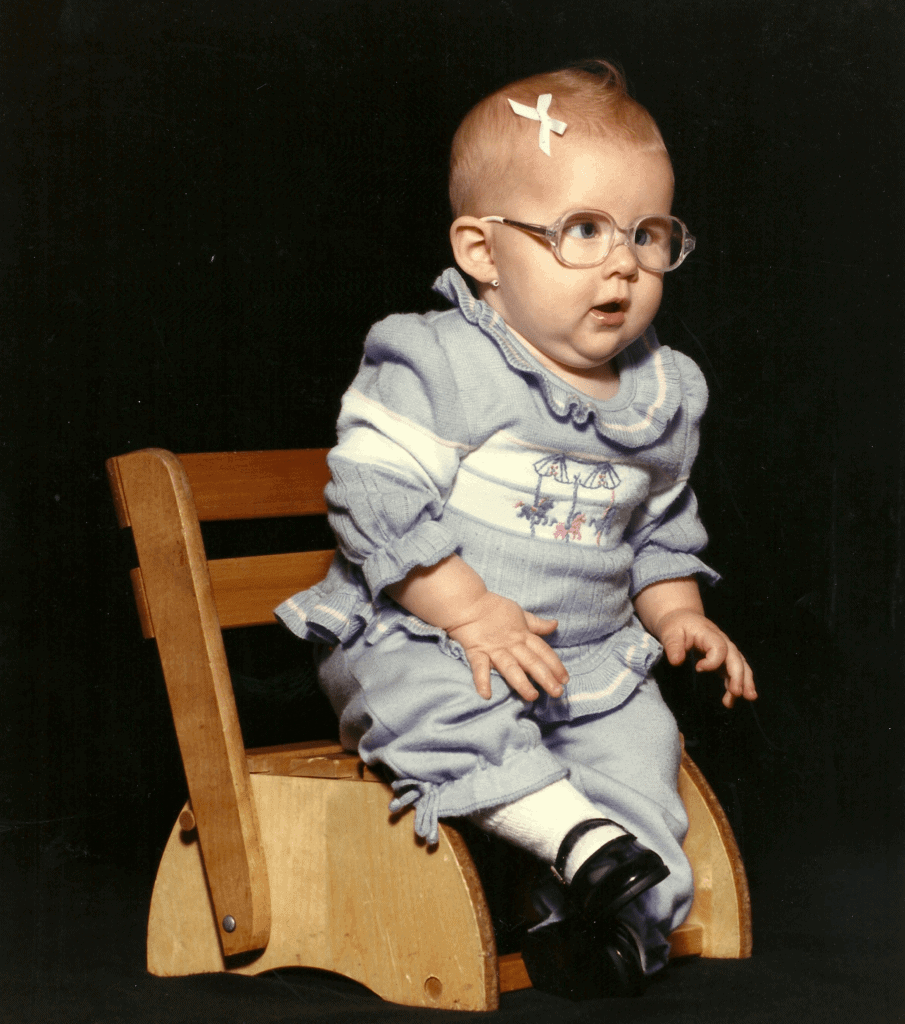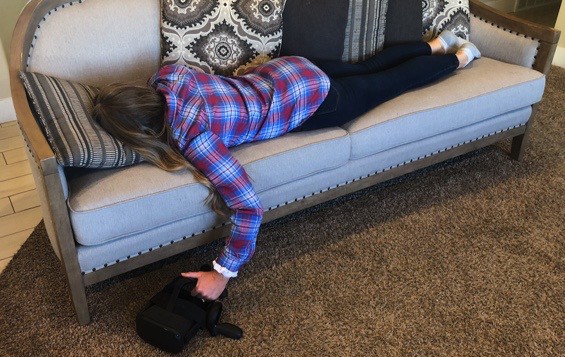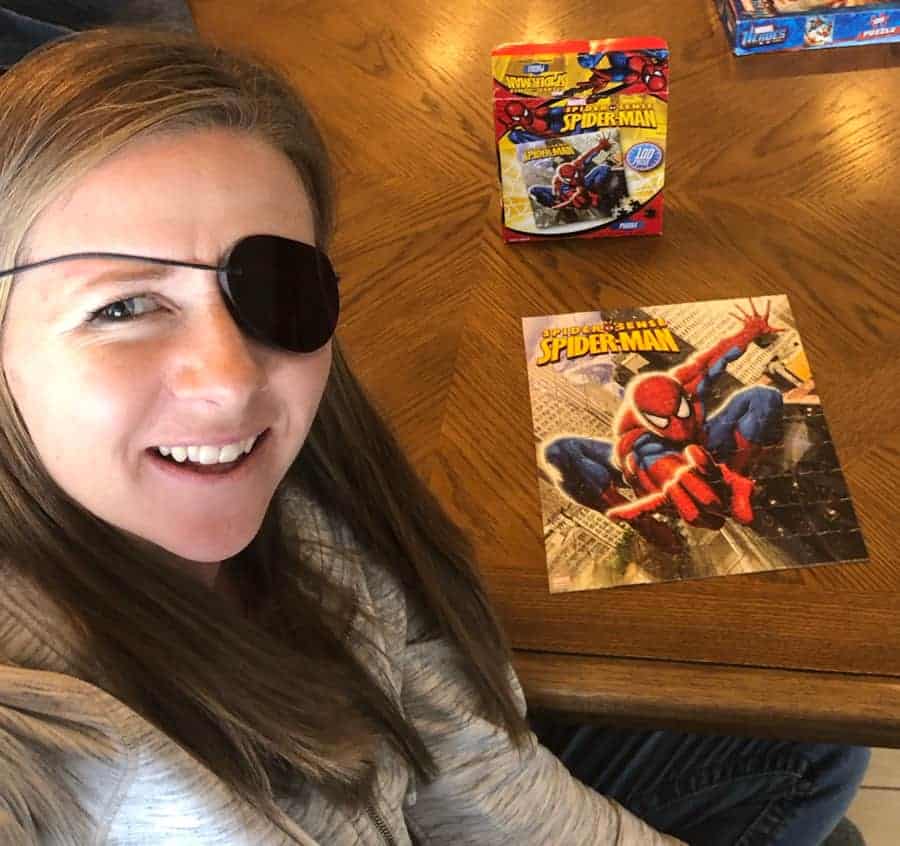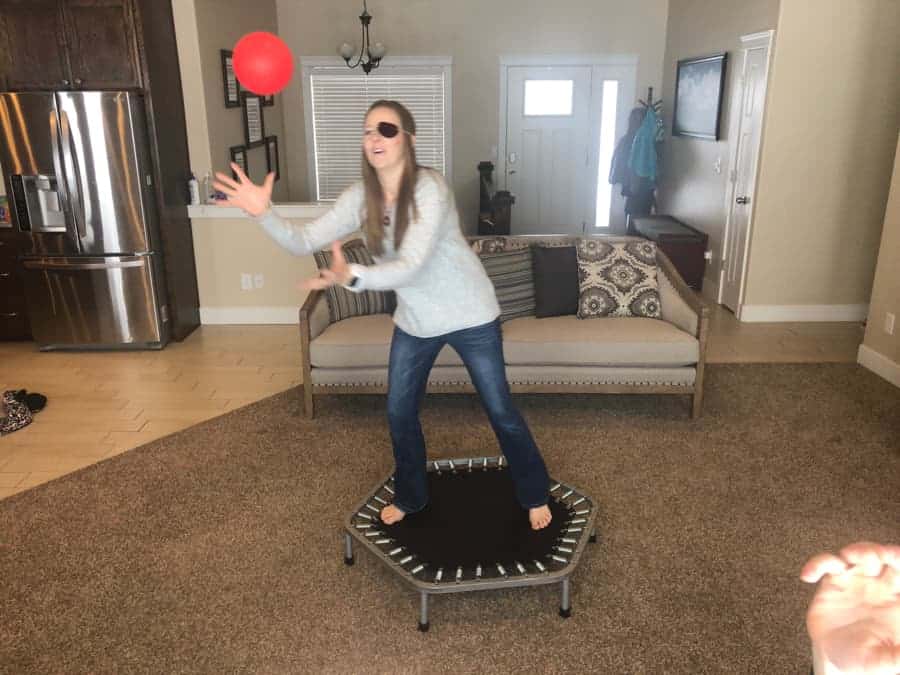Strabismus, also called crossed eyes or lazy eye, is when your eyes don’t point in the same direction. Vision therapy is a treatment that can help with this, but it can have some very annoying side effects. After four years in vision therapy, I have experienced a myriad of side effects and even discovered solutions to help alleviate them. Let’s take a look at them so you can make an informed decision about moving forward with therapy.
So, what side effects can strabismics experience with vision therapy and how can they be avoided? The most common side effects include nausea, dizziness, brain fog, double vision, irritability, and fatigue. These symptoms often appear most strongly after a new exercise is introduced in vision therapy or after an extended amount of time doing eye exercises. Luckily, these side effects can be alleviated with improved peripheral vision, a healthy diet, eye relaxation, deep breathing exercises and sleep!
For details about what to expect and specific strategies for avoiding and overcoming the side effects of vision therapy, read on.
If you would like to meet with me, find an amazing vision therapy office, or discover the magic of peripheral vision with my course, Mastering Peripheral, head to the Strabismus Academy.
Introduction
My name is Melissa and I was born with esotropia, a form of strabismus, which means that my eyes were turned in instead of being straight. Because of this, my brain never learned to use both eyes as a team and completely ignored my right eye resulting in amblyopia (lazy eye) and an eye turn.



Fast forward 32 years and I discovered vision therapy (you can read how I discovered it HERE). I thought it would be a simple fix, I’d do some exercises and wear an eye patch and be as good as new.
I quickly learned that it wouldn’t be a straight road to victory. There would be twists and turns along the way and many days of feeling the strong effects of vision therapy that made me want to quit.
I am so glad that I stuck it out and persevered through the difficult times. My eyes now work together. I have some 3D vision and my eyes are straight. I’m excited to share what I’ve learned along the way and hope that my experiences can inspire others who are on a similar journey.
My goal in writing this article is to shed light on some of the difficulties you may experience going through vision therapy and give specific strategies that will make the vision therapy process easier.
Side Effects of Vision Therapy
In-office vision therapy for strabismus usually involves at least one year of weekly appointments and daily eye exercises designed to improve binocular vision. These exercises can range from simple eye tracking to complicated use of prism and advanced technology. Learn more about vision therapy HERE.
Side effects are going to differ from patient to patient, but these are the 6 symptoms I experienced the most frequently as I went through vision therapy. As uncomfortable as these side effects may be, just remember that they are a sign that the vision therapy is working. It is changing your brain and helping to improve your binocular vision.
Think of these side effects like the muscle soreness you experience after doing a workout. The soreness is a sign that the body is changing and adjusting to the new stimulus. Your body will adjust and the side effects will dissipate…that is until you try another new exercise.

Nausea
Nausea is a very common symptom to experience during vision therapy exercises or later in the day after doing vision therapy. I have experienced everything from a little queasiness, to actually vomiting from the nausea. Not fun!
Dizziness
As your brain readjusts how it uses the eyes together this will affect your balance, posture, midline, and total body awareness. This is part of the process and will likely cause you to feel dizzy from time to time. I remember one day especially where I kept running into walls and walking sideways. It was the strangest feeling, but it sorted itself out within an hour or two.
Brain Fog
This one is possibly my least favorite. While in therapy, your brain is sometimes taken into overdrive to learn these new visual skills. Unfortunately, that leaves less computing power for things like completing intelligent thoughts, spelling, remembering names, and organizing your time. It doesn’t last forever, but it can sure be annoying!
Double Vision
Going from one-eyed seeing to two-eyed seeing isn’t going to be like turning a light switch on. Slowly, the amblyopic eye will be woken up and the brain can be taught to use the eyes together. But it’s like a toddler learning to walk, there will be falls, bumps and bruises along the way.
If done with the right professional support from a vision therapy office, double vision will be minor and infrequent, but double vision at some distances is likely going to occur at times throughout therapy. Sometimes the vision will get worse before it gets better. Submit this form and I can help you find a great office to help you on your way.
Fatigue
I bet you are exhausted just reading this list, imagine experiencing it. Your brain goes into hyperdrive as you ask it to do things it has never done before. This can be physically and emotionally exhausting.
Irritability
Quite possibly as a result of the previous symptoms, irritability is going to be part of the package. Combine nausea and exhaustion with the frustration that comes from not being able to find the right words to communicate your thoughts and it is the perfect storm. As an adult, I recognize it and give myself little timeouts to regroup. Kids, however, aren’t as aware and I notice this symptom much more frequently with my children who have gone through vision therapy. Whew. It can be rough.
When To Expect Side Effects
Expect to experience symptoms on the days when you have in-office vision therapy appointments. You may feel slightly nauseous or dizzy while doing exercises in-office, but you will likely feel much worse a few hours later and into the evening.
Exercises that have had the most significant impact on me over the last four years are exercises that force my amblyopic (lazy) eye to work such as the red lens patch, red/green glasses and virtual reality.
Exercises focused on improving my slight upward eye turn (3 diopters of hypertrophic) made me actually vomit and the side effects lasted for several days. However, I overdid the exercise by doing it for ten minutes instead of the recommended two minutes. This brings us to how to avoid side effects, my favorite part.
How to Avoid Side Effects of Vision Therapy
The good news is that, while the side effects can be quite awful, there are ways to combat them and even avoid them all together. If you want to always stay side-effect free, the following will help, and if it’s too late, go to the next section.
Listen to your optometrist and take it slow
You are going to be excited. Your optometrist will give you new, unique eye exercises and you will be able to feel them working your eyes and brain. It is exhilarating!
So when they tell you to only do the exercise for 5 minutes, listen.
I remember the first time I used the red lens patch. I was obsessed and in awe. Instead of using it for the recommended 10-15 minutes, I used it for 2 hours. I did anti-suppression puzzles, mazes, played catch with a red ball and more and I loved every second of it, until I didn’t.



I started getting nauseous, dizzy and exhausted. I stopped, but it was too late. I spent the entire afternoon in bed. The symptoms carried on for several days as my brain tried to cope with this new reality. I felt like I couldn’t finish a sentence or make an intelligent comment and I had to take a break from all vision therapy activities for a few days.
After that experience, I learned to trust my optometrist and do my activities for the prescribed time. This is meant to be a slow gradual process.
Healthy Diet
This is a solution I discovered by accident. I went on a Whole Foods-plant based diet for 6 weeks to try out my sister’s new program and to lose some weight. I noticed a huge change in my vision, my visual stamina and the lack of side-effects. The impact of healthy eating because even more clear when I went back to my old way of eating.
For two years after that experience I have experimented with different food combinations and have kept notes on what makes the biggest difference. I love food and wanted to find a sustainable diet that I could thrive visually with.
It’s very complicated, are you ready?
Cut sugar drastically, eat more vegetables and fruit.
Diet had such a profound impact on my vision that I have a free download with more details and a full article going through all the nutrients and foods for optimal vision to help others on the vision therapy journey.
How to Alleviate Side Effects of Vision Therapy When They are Present
Maybe you are like me and you can’t help but overdo exercises and eat donuts for breakfast. I totally get it, vision therapy can be an addictive, obsessive black hole that you just can’t avoid. There is something magical about having strabismus and learning to use your eyes together. The side effects are, unfortunately, much less exciting.
Here are a few strategies that will alleviate symptoms.
Open and Expand Peripheral Vision
Expanding your peripheral vision can be an effective way to reduce double vision and dizziness while improving your sense of spatial awareness. However, it takes more than simply moving your hands to the side and trying to see them while looking forward. You need to learn specific techniques and exercises to get the most out of this approach.
For the best strategies, check out my course, Mastering Peripheral. In this course, you’ll discover how to use your peripheral vision to reduce double vision, improve body awareness and depth perception, and take your vision therapy to the next level.
As a special offer for our readers, you can use the code SIDE10 to receive a 10% discount on your purchase.

Palming
Palming is a great way to relieve nausea and eye/brain fatigue, especially if you don’t have time for a nap. Simply rest the palms of your hands over your eyes and completely block out all light. Allow your eyes, face and all body muscles to completely relax and try to be very aware of every muscle as you relax them.
This can act as a reset switch and help you continue on with your day.
Sleep
Even a 30 minute nap can work wonders for alleviating side effects. Your brain and eyes are likely exhausted so they respond with double vision, nausea and brain fog. A quick nap or going to bed extra early will significantly reduce those side effects.
Curiosity
Instead of being frustrated or discouraged by symptoms such as nausea, dizziness, or brain fog, try to approach them with a sense of curiosity. Observe how your body and mind are reacting to the therapy, and be open to the idea that these symptoms might actually be signs of progress.
Acknowledge the fact that your brain is working double or triple time trying to help you gain binocular vision. It is difficult!
When you accept the symptoms and stop fighting them, they seem to dissolve much more quickly.
Conclusion
vision therapy can be an effective treatment for strabismus, but it can come with some challenging side effects like nausea, dizziness, brain fog, double vision, irritability, and fatigue. However, with the right strategies, these symptoms can be alleviated and the vision therapy process can become easier.
It’s important to remember that these side effects are a sign that the therapy is working and that progress is being made towards improving binocular vision.
Working with a qualified developmental optometrist will make a huge difference. I can help you find one close to you if you visit the link below. Good luck on your journey!

